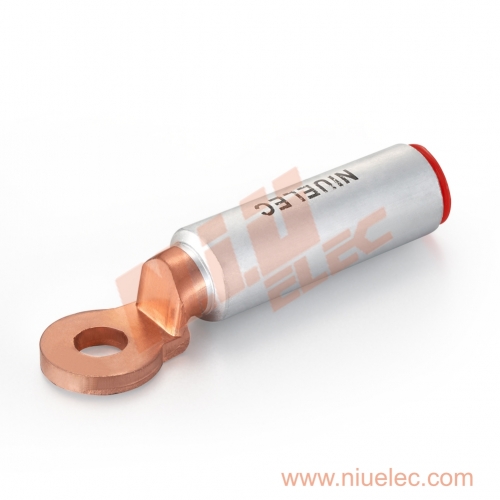Choosing the Best Cable Lugs for Your Electrical Projects
When it comes to ensuring the reliability and efficiency of your electrical projects, selecting the right cable lugs is paramount. Cable lugs, also known as cable connector, play a critical role in the overall performance and safety of electrical systems. This guide will provide an in-depth look at different types of cable lugs, the benefits of using high-quality options, how to select the right lug for various applications, installation procedures, and preventative maintenance for longevity.
An In-Depth Look at Different Types of Cable Lugs
Benefits of Using High-Quality Cable Lugs
How to Select the Right Cable Lug for Different Applications
Installation Procedures for Various Cable Lugs
Preventative Maintenance for Longevity of Cable Lugs
An In-Depth Look at Different Types of Cable Lugs
Cable lugs come in various types, each designed to meet specific needs and applications. The most common types include compression lugs, mechanical lugs, and solder lugs. Compression lugs are widely used for their reliability and ease of installation. They require a crimping tool to compress the lug onto the cable, creating a secure connection. Mechanical lugs, on the other hand, use screws to fasten the lug to the cable. They are ideal for applications where frequent disconnection and reconnection are necessary. Solder lugs require soldering to attach the lug to the cable, providing a strong and permanent connection. Additionally, bimetallic lugs, such as the DTL-2 cable bimetallic lug, are specifically designed to connect aluminum cables to copper busbars, preventing galvanic corrosion and ensuring a secure connection between dissimilar metals.
Benefits of Using High-Quality Cable Lugs
Investing in high-quality cable lugs offers several advantages. Firstly, they ensure a reliable and stable connection, reducing the risk of electrical failures and downtime. High-quality lugs are made from durable materials that withstand harsh environmental conditions, including extreme temperatures, moisture, and corrosion. Additionally, they provide superior conductivity, minimizing energy loss and improving the overall efficiency of your electrical system. By using premium cable lugs, you also enhance the safety of your projects, as they are less likely to degrade over time and cause hazardous situations. Furthermore, high-quality lugs are often designed to meet industry standards and certifications, ensuring compliance with regulations and providing peace of mind.

How to Select the Right Cable Lug for Different Applications
Choosing the right cable lug for your specific application involves considering several factors. First, assess the type and size of the cable you are using. The lug should be compatible with both the conductor material and the cable diameter. For example, if you are working with aluminum cables, using a bimetallic lug like the DTL-2 ensures a secure connection with copper busbars. Next, evaluate the electrical load and current-carrying capacity of the lug. It is essential to select a lug that can handle the required amperage without overheating or causing voltage drops. Additionally, consider the environmental conditions in which the lug will be used. If the project is exposed to moisture, chemicals, or extreme temperatures, opt for lugs with appropriate coatings or materials to prevent corrosion and degradation. Lastly, take into account the installation method and tools required. Ensure that you have the necessary equipment and expertise to install the chosen lug correctly.
Installation Procedures for Various Cable Lugs
Proper installation of cable lugs is crucial for maintaining a reliable and safe electrical connection. For compression lugs, start by stripping the insulation from the cable to expose the conductor. Insert the cable into the lug's barrel and use a crimping tool to compress the lug onto the cable. Ensure that the crimp is tight and secure, as a loose connection can lead to overheating and failure. For mechanical lugs, strip the cable as needed and insert it into the lug's barrel. Tighten the screws to secure the cable in place, making sure not to overtighten and damage the conductor. Solder lugs require a different approach. Strip the cable, insert it into the lug, and use a soldering iron and solder to create a strong bond between the lug and the cable. Allow the solder to cool and solidify before handling the connection. Always follow the manufacturer's guidelines and industry best practices during installation to ensure optimal performance.
Preventative Maintenance for Longevity of Cable Lugs
To extend the lifespan of your cable lugs and maintain their performance, regular preventative maintenance is essential. Start by conducting visual inspections to check for signs of wear, corrosion, or damage. Clean the lugs and connections periodically to remove dust, dirt, and oxidation that can impede conductivity. In environments prone to moisture or chemicals, consider applying protective coatings or using lugs with corrosion-resistant materials. Tighten any loose connections and replace damaged lugs promptly to prevent electrical failures. Additionally, monitor the temperature of the connections during operation. Excessive heat can indicate poor connections or overloading, which should be addressed immediately. By implementing a proactive maintenance schedule, you can ensure the longevity and reliability of your cable lugs and overall electrical system.
Selecting the best cable lugs for your electrical projects is a critical step in achieving reliable and efficient performance. By understanding the different types of lugs available, recognizing the benefits of high-quality options, and following proper selection, installation, and maintenance procedures, you can enhance the safety and effectiveness of your electrical systems. For more information on high-quality bimetallic lugs, visit Niuelec and explore their range of products designed to meet your specific needs.